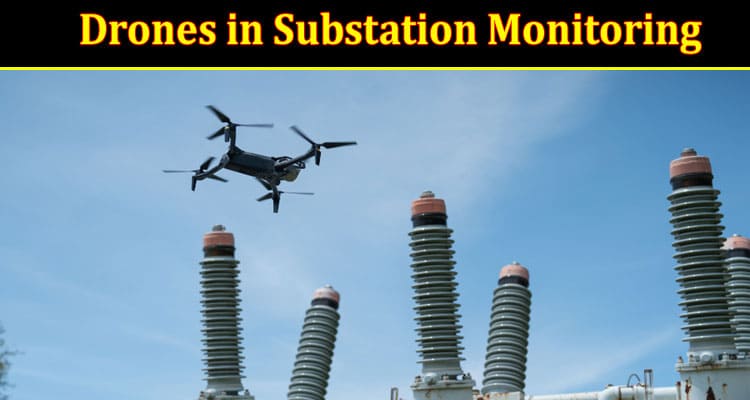Integrating advanced technology into utility infrastructure has opened new avenues for efficiency and reliability. Drones for Substation Monitoring are transformative tools among these innovations. Their ability to streamline operations, enhance safety, and provide real-time data revolutionizes monitoring and maintaining substations. This article looks into the multifaceted role of drones in this context, exploring their impact on various aspects of substation management.
Revolutionizing Substation Inspections
The advent of drone technology in substation inspections has revolutionized this critical process. These uncrewed aerial vehicles (UAVs) can easily access hard-to-reach areas, capturing detailed images and data that human inspectors would find challenging to obtain. This capability is particularly beneficial for inspecting high-voltage equipment, reducing the risk of electrical hazards to personnel. Drones equipped with advanced imaging technologies, like infrared and zoom capabilities, can detect minute defects or signs of wear that might be invisible to the naked eye. This level of detail in inspections not only enhances the safety of the infrastructure but also contributes to more accurate and informed decision-making processes.
Enhancing Monitoring and Surveillance
Drones have transformed the scope of monitoring and surveillance in substation management. Equipped with advanced sensors, they provide continuous oversight of the facility’s condition and operations. This persistent monitoring is crucial for the early detection of unauthorized intrusions, potential equipment failures, or environmental concerns like flooding or fire hazards. The ability of drones to quickly cover large areas and transmit real-time data back to control centers enables a more proactive approach to security and operational management, ensuring that issues are addressed promptly and efficiently.
Improving Maintenance and Repair
Incorporating drones into maintenance and repair processes significantly enhances the efficiency and effectiveness of these operations. By using drones equipped with diagnostic tools like thermal imaging cameras, maintenance teams can pinpoint specific areas in need of repair without the need for extensive manual inspections. This saves time and reduces the costs associated with general maintenance. The data collected can be analyzed for future maintenance needs, allowing for a more strategic and proactive approach to upkeep, ultimately enhancing the reliability and longevity of substation components.
Impact on Emergency Response
Drones play a vital role in improving the emergency response capabilities of utility companies. In natural disasters, equipment failures, or other emergencies, drones can be rapidly sent to assess the situation. They provide crucial situational awareness that aids in formulating an effective response strategy. The aerial perspective offered by drones is invaluable in assessing the extent of damage, identifying safe access routes for repair crews, and determining the resources needed for a swift and effective response. This capability is essential in minimizing the downtime of critical infrastructure and reducing the overall impact on the community.
Optimizing Asset Management
Drones transform asset management in substations by enabling more precise and comprehensive asset monitoring. Regular surveillance flights can track the condition of assets over time, providing a wealth of data that can be used for predictive maintenance and asset lifecycle management. This proactive approach aids in identifying potential issues before they lead to failures, thereby avoiding costly downtime and extending the lifespan of equipment. The detailed insights from drone surveillance also aid in strategic planning and investment decisions, ensuring that resources are allocated effectively to maintain and enhance the infrastructure.
Training and Skill Development
Integrating drones into substation monitoring has created a need for specialized training and skill development among utility personnel. Training programs focus on operating drones safely and efficiently, interpreting the data collected, and understanding the regulatory landscape surrounding drone usage. This skill development concerns technical proficiency, data analysis, problem-solving, and strategic planning. By investing in training, utility companies are building a workforce capable of leveraging the full potential of drone technology, paving the way for more innovative and efficient utility management practices.
Future Trends and Technological Advancements
The future of drone technology in substation monitoring is poised for further advancements. Integrating artificial intelligence (AI) and machine learning algorithms will enable more sophisticated data analysis, allowing for automated anomaly detection and predictive maintenance insights. The potential for drones to perform automated repair tasks is also on the horizon, which could further reduce the need for human intervention in hazardous environments. Advancements in battery technology and autonomous flight capabilities will increase the range and endurance of drones, allowing for more extensive and frequent monitoring. These technological developments are expected to make substation monitoring even more efficient, accurate, and cost-effective, significantly impacting the future of utility infrastructure management.
Conclusion
In conclusion, incorporating Drones for Substation Monitoring has ushered in a new era in the field of utility infrastructure. By enhancing efficiency, safety, and
reliability, drones are not just tools but pivotal components in the modernization of substation management. As they continue to evolve, these innovative technologies are set to redefine how utility infrastructures are maintained and monitored, ensuring a more resilient and efficient power supply for future generations.

